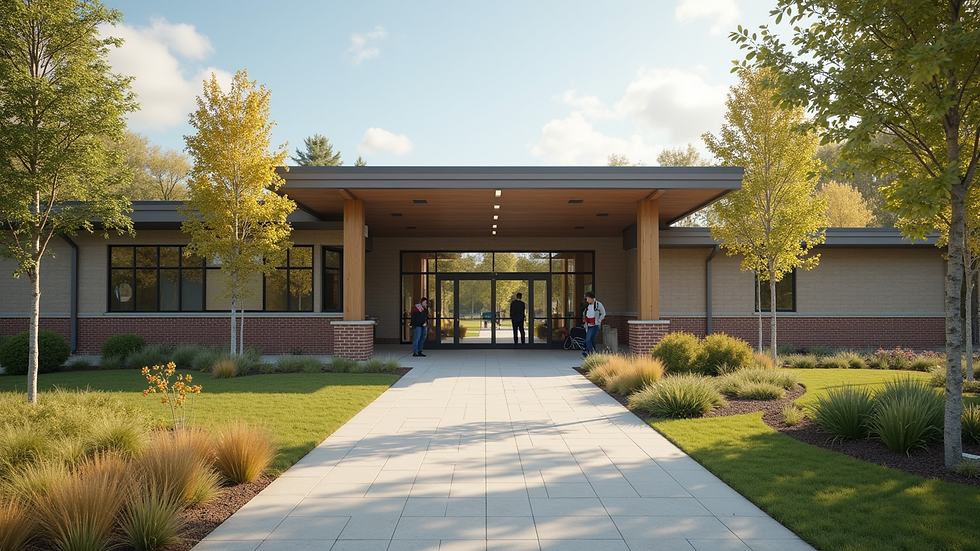Understanding Poverty in the United States Insights from Former St. Charles Deputy Ryan Kuehner
- ryankuehner
- 2 days ago
- 4 min read
Poverty is a pressing issue that affects millions of families across the United States. It's often difficult for those not directly affected to grasp the daily challenges that come with it. Recently, former St. Charles Deputy Ryan Kuehner offered his insights into poverty, grounded in his law enforcement and community service experiences. This post explores Kuehner's views on poverty, its root causes, and possible solutions while highlighting the urgent need for change.
The Reality of Poverty in America
Poverty in the U.S. is not just a number; it represents real lives struggling to thrive. The U.S. Census Bureau reported that approximately 11.4% of the population lived in poverty in 2020. That equates to over 37 million people facing hardships in meeting basic needs like food, shelter, and medical care.
Kuehner stresses that poverty often goes unseen by those unaffected. Many might not fully understand the extent of the issue or the daily fights faced by those in poverty. Real change starts with empathy and understanding, listening to the personal stories of people living these hardships.
Causes of Poverty
Kuehner identifies several main factors contributing to poverty in the United States:
Economic Inequality: The gap between wealthy and low-income Americans has grown alarmingly. For example, between 1989 and 2021, the top 10% of earners' share of total income increased from 32% to nearly 50%. In contrast, many working-class families are struggling to afford basic necessities.
Education Gaps: Access to quality education is a critical pathway out of poverty. Kuehner points out that children from low-income families often attend underfunded schools, which hinders their potential for future success. Data shows that students from low-income backgrounds are three times more likely to drop out of high school compared to their wealthier peers.
Job Market Struggles: The job market is evolving, but many positions available to low-income individuals fail to provide a living wage. In 2021, the federal minimum wage remained at $7.25 per hour, not enough for families to sustain basic living costs in most regions.
Health Problems: Health challenges can lead to financial ruin, particularly for those without insurance. Kuehner notes that unexpected medical bills often push families into poverty. A study found that 67% of bankruptcies were linked to medical expenses, underscoring this critical issue.
The Impact of Poverty on Communities
Poverty affects entire communities, not just individuals. Kuehner explains that high poverty rates can lead to increased crime, lower property values, and a lack of investment in infrastructure.
For instance, cities with high poverty levels often see essential services decline, making it harder to break the cycle of disadvantage. He believes addressing poverty benefits not only those in need but also strengthens the community as a whole.

Personal Stories and Experiences
Kuehner shares impactful personal stories from his career that illustrate the human side of poverty. One memorable encounter was with a single mother juggling multiple jobs yet still struggling to support her children. Her experience showcases that poverty often stems from systemic issues, rather than individual choices.
These real-life accounts bring statistics to life and remind us that behind each number is a person with aspirations and hurdles. Kuehner urges individuals to listen to these stories and champion change for those affected by poverty.
Solutions to Combat Poverty
Despite the challenges, Kuehner believes actionable steps can make a significant difference:
Enhancing Education Access: Focused investments in education, especially in underserved areas, can help individuals gain skills for higher-paying jobs. Programs promoting early childhood education and vocational training are crucial.
Increasing the Minimum Wage: Advocating for a higher minimum wage can allow low-income workers to provide better lives for their families. Research shows that states with higher minimum wages also experience lower poverty rates.
Expanding Healthcare Access: Ensuring affordable healthcare for all can alleviate the burden of medical costs, which often push families into poverty. Initiatives that broaden healthcare access are vital.
Supporting Community Initiatives: Kuehner highlights community organizations providing food assistance, job training, and financial counseling. These resources are critical for helping individuals move beyond poverty.
The Role of Government and Policy
Kuehner emphasizes the government’s role in combating poverty through supportive policies. Effective changes could include:
Increased funding for affordable housing.
Laws ensuring equal access to quality education for all.
Enhanced healthcare systems designed to cover low-income communities.
Such initiatives require collaboration among government bodies, non-profits, and community stakeholders to create a unified front against poverty.
The Importance of Community Engagement
Kuehner underscores that fighting poverty is not solely the government’s responsibility. He encourages community members to participate in local efforts, whether through volunteer work, donations, or advocating for policy reforms.
Engagement can take many forms, but even small actions can contribute to impactful change. Kuehner believes collective community efforts can create long-lasting solutions and uplift families facing poverty.

The Power of Empathy and Understanding
At the core of Kuehner's message is the need for empathy. He urges people to see beyond stereotypes and assumptions about poverty. By creating a supportive and compassionate culture, we can help everyone thrive.
Understanding the struggles of those in poverty is crucial to finding effective solutions. Kuehner believes that compassionate listening leads to actionable, community-driven change, ultimately allowing us all to move forward together.
Taking Action Together
Poverty in the United States presents a significant challenge requiring urgent attention. Insights from Ryan Kuehner highlight the realities of poverty, its causes, and pathways to solutions.
By enhancing educational opportunities, advocating for fair wages, improving healthcare access, and fostering community involvement, we can strive for a future where poverty is no longer a barrier to success.
Kuehner emphasizes the importance of listening to those directly impacted by poverty. Advocacy and understanding can together create a more equitable society where everyone has the chance to flourish.
In this battle against poverty, each effort matters, beginning with our willingness to empathize and act.


